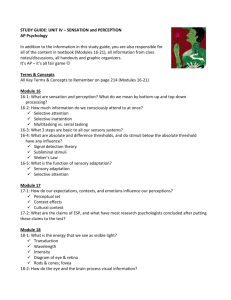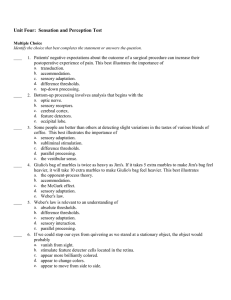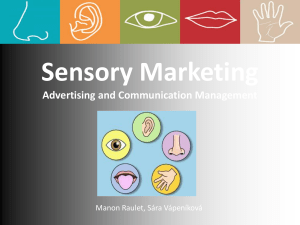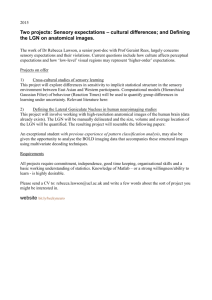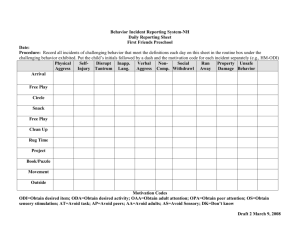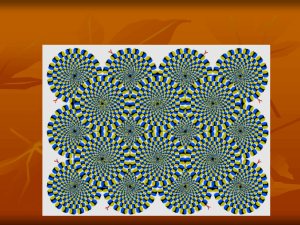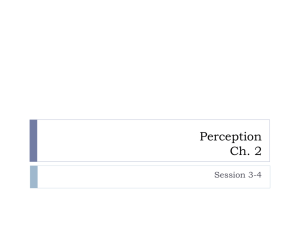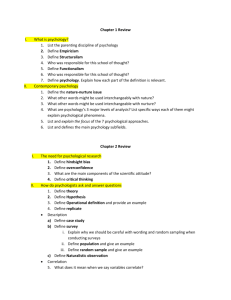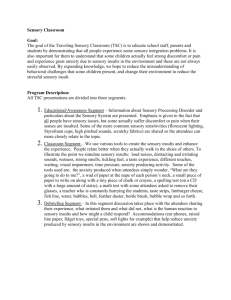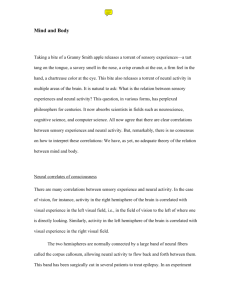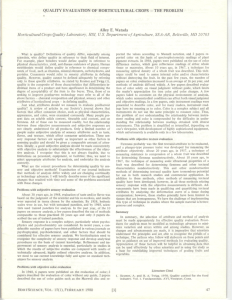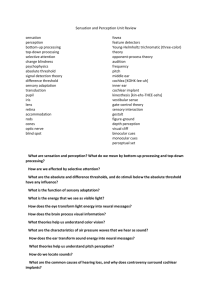Psych 615 Perceptual Processes
advertisement
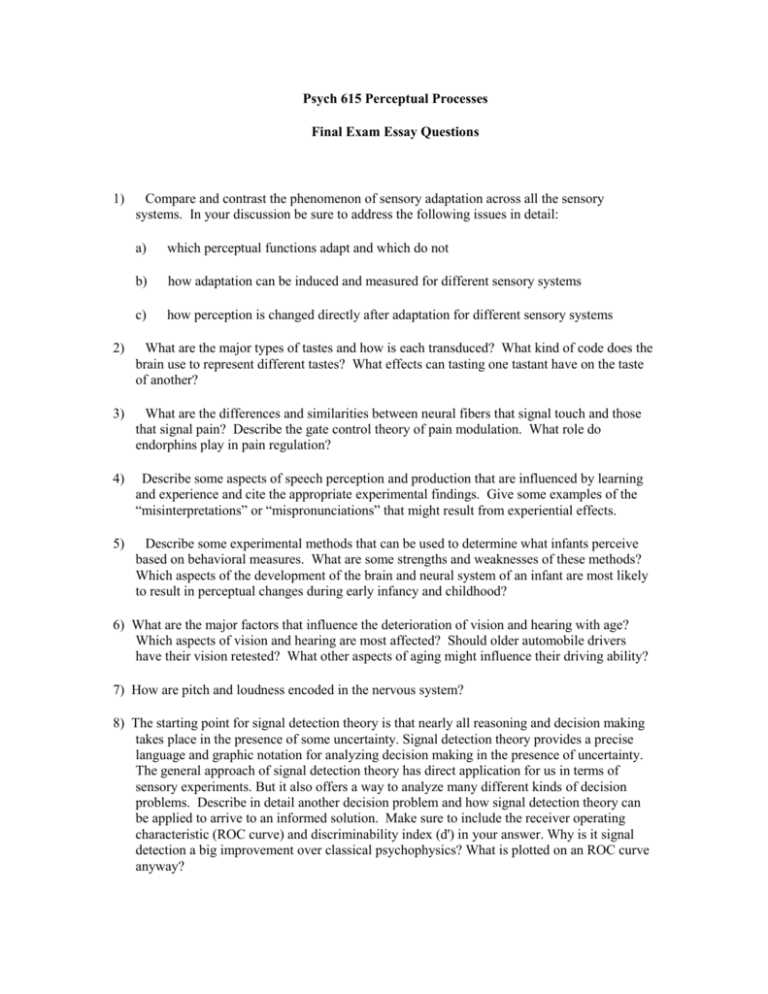
Psych 615 Perceptual Processes Final Exam Essay Questions 1) Compare and contrast the phenomenon of sensory adaptation across all the sensory systems. In your discussion be sure to address the following issues in detail: a) which perceptual functions adapt and which do not b) how adaptation can be induced and measured for different sensory systems c) how perception is changed directly after adaptation for different sensory systems 2) What are the major types of tastes and how is each transduced? What kind of code does the brain use to represent different tastes? What effects can tasting one tastant have on the taste of another? 3) What are the differences and similarities between neural fibers that signal touch and those that signal pain? Describe the gate control theory of pain modulation. What role do endorphins play in pain regulation? 4) Describe some aspects of speech perception and production that are influenced by learning and experience and cite the appropriate experimental findings. Give some examples of the “misinterpretations” or “mispronunciations” that might result from experiential effects. 5) Describe some experimental methods that can be used to determine what infants perceive based on behavioral measures. What are some strengths and weaknesses of these methods? Which aspects of the development of the brain and neural system of an infant are most likely to result in perceptual changes during early infancy and childhood? 6) What are the major factors that influence the deterioration of vision and hearing with age? Which aspects of vision and hearing are most affected? Should older automobile drivers have their vision retested? What other aspects of aging might influence their driving ability? 7) How are pitch and loudness encoded in the nervous system? 8) The starting point for signal detection theory is that nearly all reasoning and decision making takes place in the presence of some uncertainty. Signal detection theory provides a precise language and graphic notation for analyzing decision making in the presence of uncertainty. The general approach of signal detection theory has direct application for us in terms of sensory experiments. But it also offers a way to analyze many different kinds of decision problems. Describe in detail another decision problem and how signal detection theory can be applied to arrive to an informed solution. Make sure to include the receiver operating characteristic (ROC curve) and discriminability index (d') in your answer. Why is it signal detection a big improvement over classical psychophysics? What is plotted on an ROC curve anyway?
